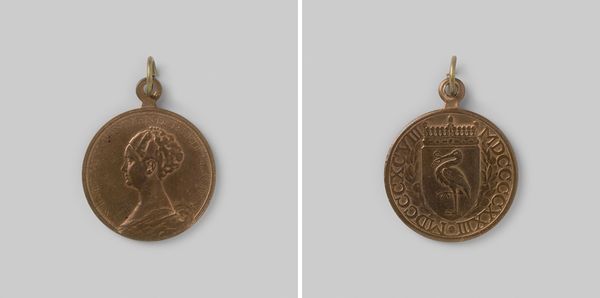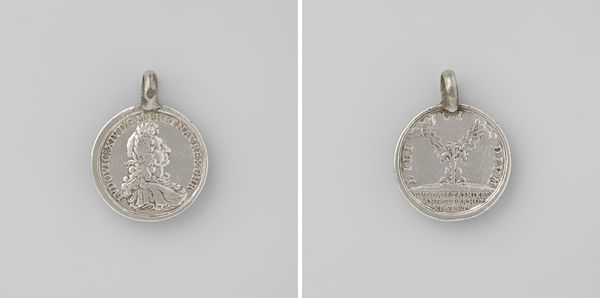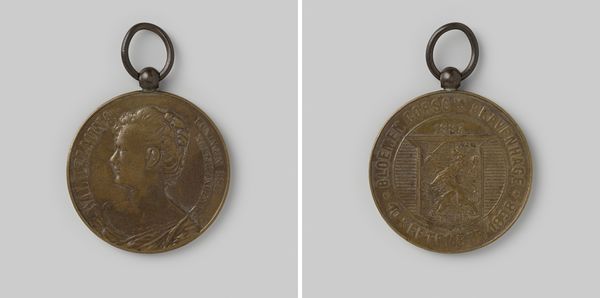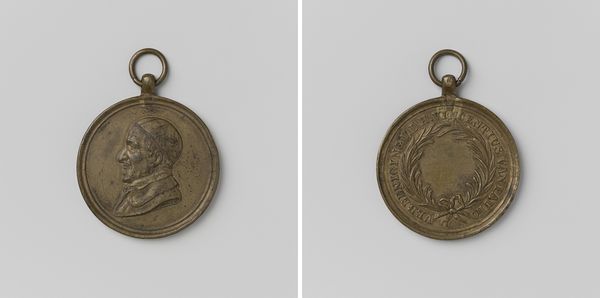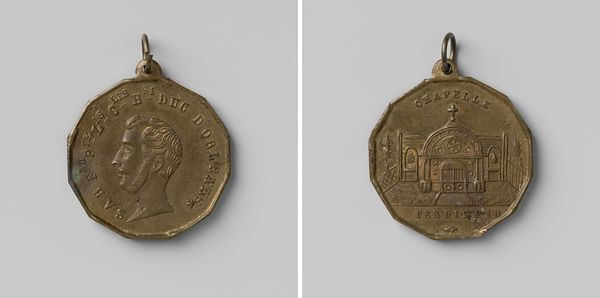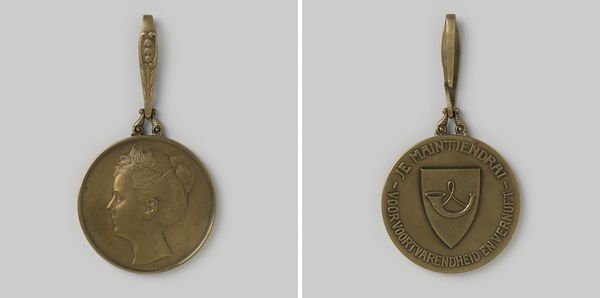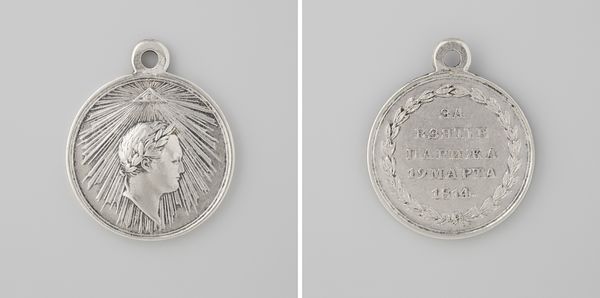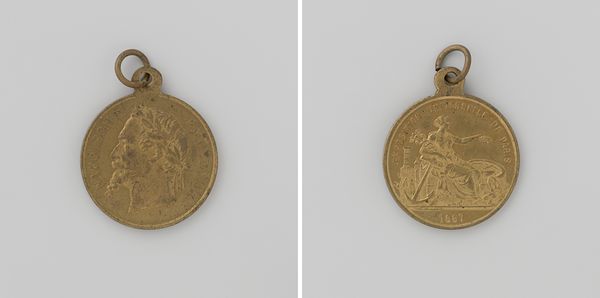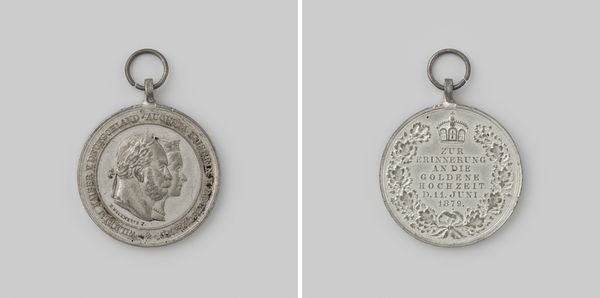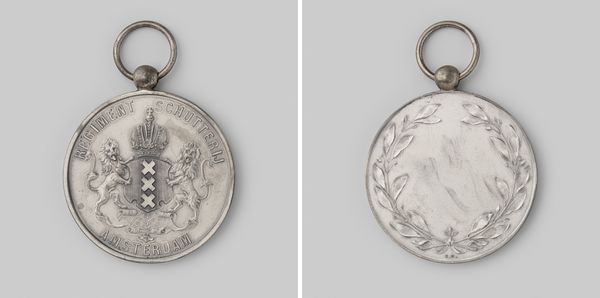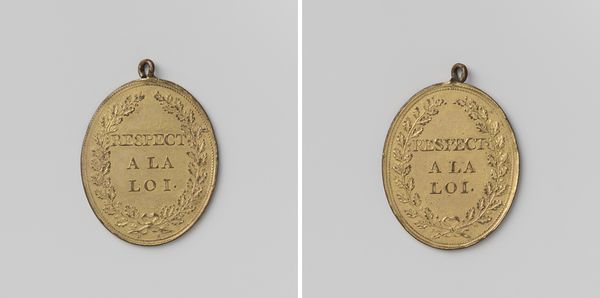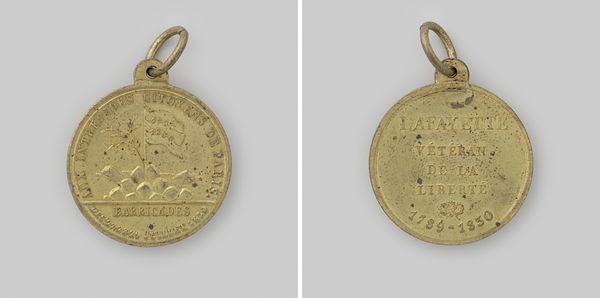
Inhuldiging te Amsterdam van Willem Frederik, prins van Oranje als souverein vorst 1814
0:00
0:00
silver, metal
#
portrait
#
medal
#
neoclacissism
#
silver
#
metal
#
history-painting
#
miniature
Dimensions: diameter 3.5 cm, diameter 2.3 cm, weight 7.32 gr
Copyright: Rijks Museum: Open Domain
Curator: Here we have a medal commemorating Willem Frederik's inauguration as sovereign prince in Amsterdam, 1814, crafted from silver. What strikes you first about it? Editor: Its pristine quality, perhaps deceptive for an object over two centuries old. The silvery gleam suggests careful handling and preservation. And, naturally, the crown. Curator: The crown is a compelling addition. Consider the clean lines, the symmetry – features of neoclassicism. Notice how the inscription frames the central image, a classical strategy that directs the eye. Editor: I'm more drawn to thinking about where the silver came from. Was it local? Colonial? What kind of labor went into extracting and refining it for what is ultimately, in this form, propaganda? This shifts our perception away from pure artistry to the socioeconomic conditions that made such pieces possible. Curator: Interesting. But I find the elegance undeniable, look how the artist uses a delicate contour line to suggest the profile's depth and convey nobility, all in such a limited scale. The composition exudes power within its confined circular space. Editor: Indeed. Consider, though, the broader consumption of medals like these. Who produced them? Were these mass-produced, individualized objects of status and how many artisans were involved? These objects were deliberately made to engage large swaths of a newly founded sovereign nation. Curator: Perhaps, but these historical contexts should be understood through their material form; as form and material function as signs to deliver intended meanings. A deeper reading. Editor: Perhaps. But consider that these intended meanings were designed to gloss over what are often uncomfortable realities in production and making, therefore that shift in perceptive lenses opens to more thorough understandings. Curator: I concede that both perspectives can illuminate the richness of this piece, even in miniature, a world of history and artistic ingenuity. Editor: Yes, perhaps both of our ways of seeing allow for a nuanced reading between aesthetics, objecthood, and history.
Comments
No comments
Be the first to comment and join the conversation on the ultimate creative platform.
